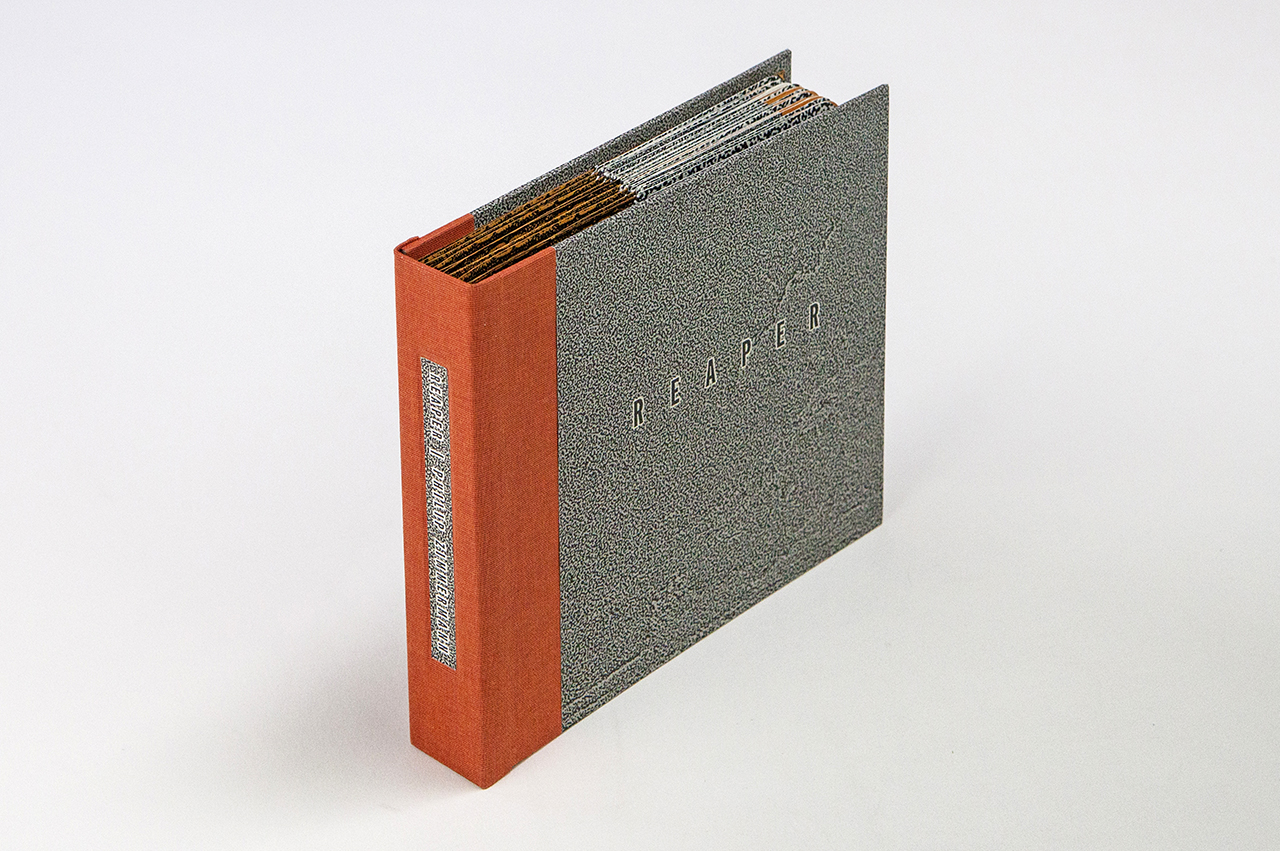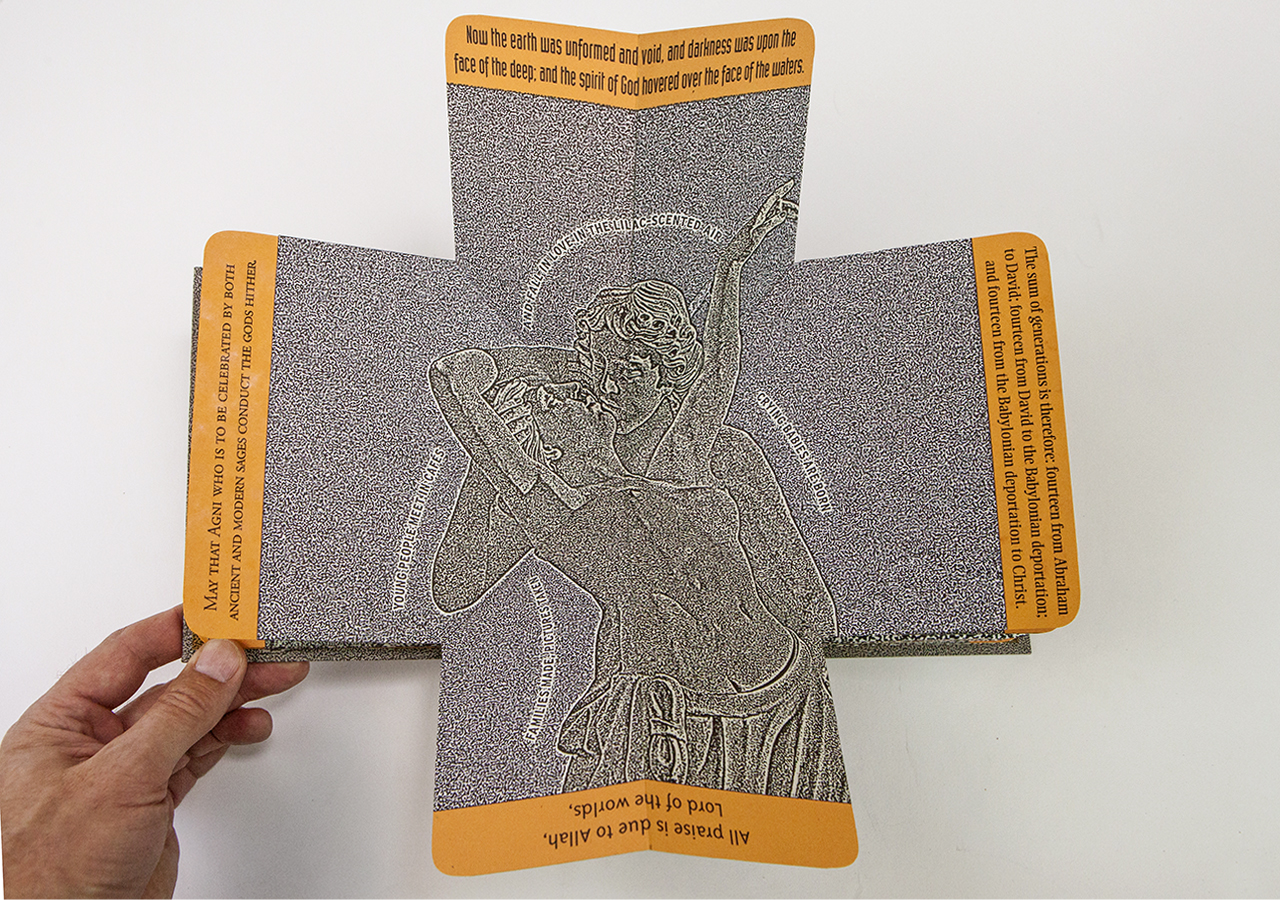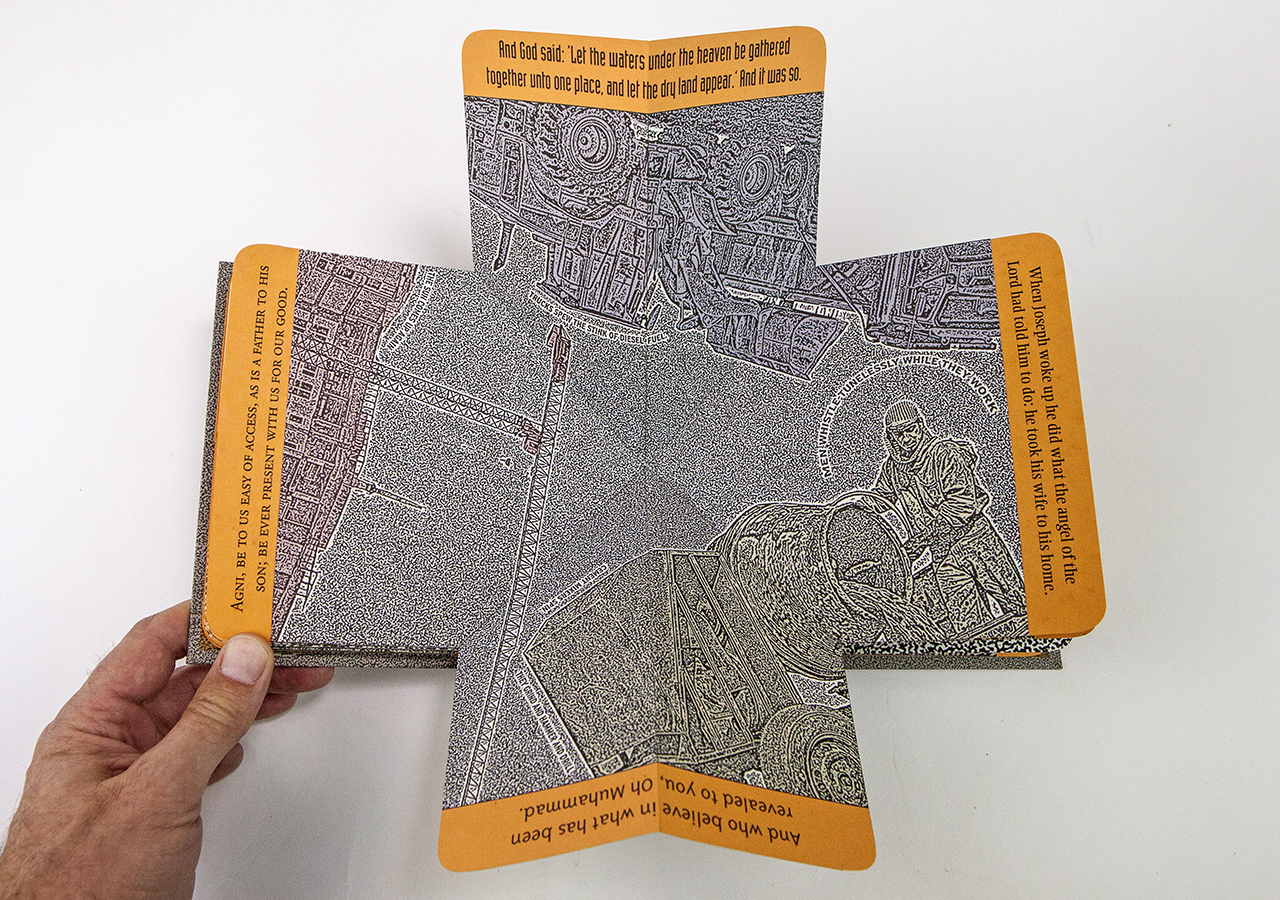REAPER, Philip Zimmermann, 2015
Reaper is a meditation on the destructive cycle of violence and war, followed by rebuilding and reconstruction, then war again. This is often followed by yet another iteration of that rebuilding and destruction: a painful cycle that has continued in many areas around the globe throughout history. The theme was inspired by the events in Gaza during the summer of 2014. It is most commonly caused by the friction and antagonism between different religious and tribal/ethnic belief systems and often aggravated by the extreme actions of fundamentalists on both sides and their often rigidly-held and intolerant ideas. In this book, based on an adaptation of the old Turkish-map-fold structure, text is read on several levels. The outer tabs hold the first ten rather innocuous lines of the primary texts of four specific belief systems. They include the Rig-Veda the oldest sacred Hindu text, the Torah (Genesis) from the Jewish faith (the Old Testament), the first lines of the Christian New Testament Bible, and finally the first ten lines from the Qur’an from Islam. The title of the book refers to both death, as in ‘the grim reaper’, and to the model name of one of the American drone or UAVs (unmanned aerial vehicles) used for bombing in the Middle East and elsewhere. This book was part of my contribution to a show called Four Proposals For Reading at Seager-Gray Gallery in Mill Valley, CA in February 2015.
I’ve long wanted to make a book that used multiple Turkish-map-fold pages. Those are the kind of folds found in pop-up city maps for London or Paris and other cities. I made a preliminary dummy using that structure with a series of V-shaped holders for the pop-out pages in the Spring of 2009. I wondered if I would ever have content that would work and make sense with that form. Soon however, with the increasing use of drones, and then the Gaza-Israeli wars, I developed during the summer of 2014 a text and concept that I thought worked well with that eccentric form. I wanted to comment on the perpetual wasteful wars that take place around the world, followed by rebuilding, and then again more war and destruction. It always seemed caused by the friction between different belief systems and usually aggravated by tribal and ethnic biases. There was always one group or another that felt they had been victimized (perceived or actually) by the other group. Of course it is and was a complicated issue, and blaming these violent clashes on any one thing is simplistic.
The text that I wrote attempted to make a very short poetic version of this idea that would, I hoped, seem more generalized and universal. One of the books I read doing research was called On Killing: The Psychological Cost of Learning to Kill in War and Society, by Dave Grossman. Reading another book Fields of Blood: Religion and the History of Violence, (2014) by Karen Armstrong, I found that she argues that historically it really isn’t religion specifically that should be blamed since religion in the past was completely integrated into politics, society and culture. However, religion, and the modern conception of religion, is different in today’s society. She contends that it is more the nature of man that causes all this conflict and violence. I would argue that religion and religious intolerance, tied in with tribal and ethnic differences, does indeed have a great deal to do with violence and conflict today, and is often tied into nationilistic impulses promoted by politicians.
I tried to make the images in the book somewhat universal, hoping to evoke a timeless sense of the cycle of conflict and I attempted to include the faint hope that eventually, we may achieve some sort of resolution to this destructive cycle. I made a number of attempts to “treat” the images so they looked more like images set in some sort of granite-like stone. I was inspired by the look of photocopied photocopies where each new generation starts to become more and more textured and deconstructed. Rather than use some sort of Photoshop filter on my images, I used a WebGL application that uses a special JavaScript API code to transform images that are loaded in a browser. The one that I used was made by Evan Wallace and is at <http://evanw.github.io/webgl-filter/> should you wish to try it. There are numerous effects but the one I used was called edge work and to get the effect that I was looking for, I used a certain amount of noise and image resolution to get the desired pattern from a grayscale image that I had produced for each page. There is a slider in the web interface which allows you to adjust the size of the dithering that the web app creates. I went through many, many tries before I could generate consistent patterning in my images which I then colorized.
The edition is 25 copies, signed and numbered. Dimensions: 6.5" x 7.5" x 1". I am grateful to the College Book Art Association (CBAA) for a Production Assistance Grant to help with publication costs. Reaper is a four-color archival pigment inkjet-printed book, created as a series of fold-out, modified, Turkish-map-folds, printed on acid-free French Paper Co. stock. Pages hand-cut and folded and cased-in by hand, with board covers; German Dubletta bookcloth spine was used, with inset title. An archival phase-box enclosure is included. $425, plus shipping.

















